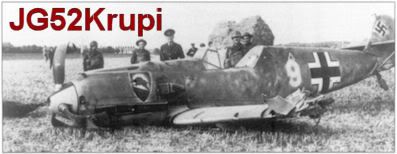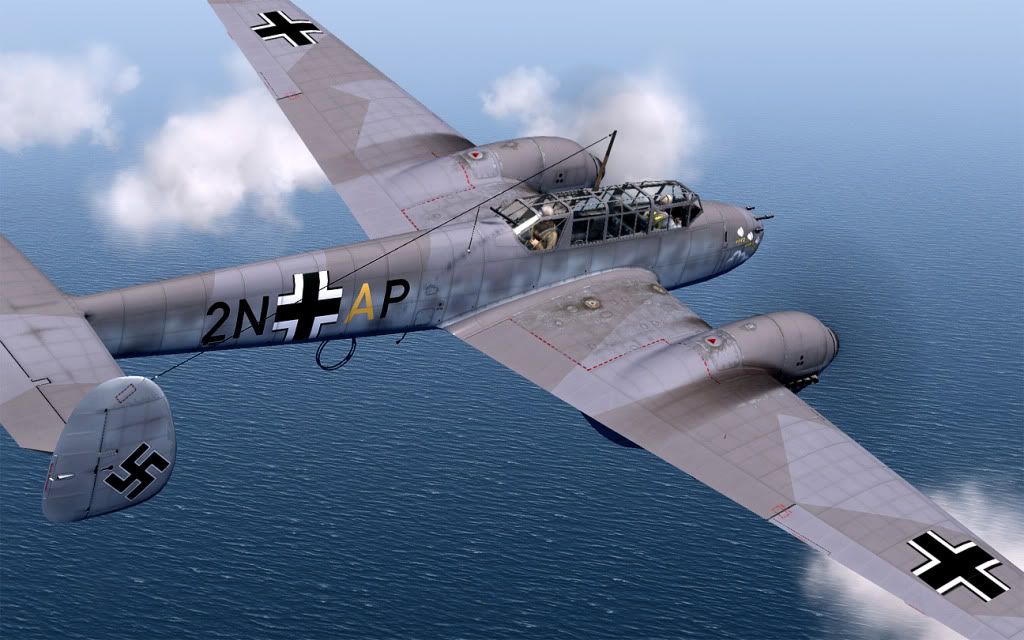
 |
|
#11
|
||||
|
||||
|
Quote:
Unless you are flying on an historical online server its up to the individual what he/she flies. Nice work on the 110's mate
__________________
Regards Chris  http://www.aircombatgroup.co.uk/index.php Gigabyte z77-d3h, Intel Core i5-3570K 3.40GHz (OC 4.2GHz), Corsair Vengeance Low Profile 24GB DDR3 PC3-12800C9 1600MHz Dual Channel Kit , Samsung 120GB SSD 840 SATA 6Gb/s Basic, Seagate Barracuda 7200RPM 1TB SATA 6Gb/s 64MB, Cooling Silencer Mk II 750W '80 Plus Silver' PSU, GTX580 3gb OC |
|
#12
|
||||
|
||||
|
Wow very nice, top work is the second picture taken in the beat patch?
__________________
 Gigabyte X58A-UD5 | Intel i7 930 | Corsair H70 | ATI 5970 | 6GB Kingston DDR3 | Intel 160GB G2 | Win 7 Ultimate 64 Bit |
MONITOR: Acer S243HL. CASE: Thermaltake LEVEL 10. INPUTS: KG13 Warthog, Saitek Pedals, Track IR 4. |
|
#13
|
|||
|
|||
|
Quote:
|
|
#14
|
|||
|
|||
|
Quote:
|
|
#15
|
|||
|
|||
|
Goog evening everybody
Beautiful skin aelius: THANKS ! Alban |
|
#16
|
|||
|
|||
|
Much of the appeal of the Bf-110C-4 is the variety of formulated color schemes. The original camouflage pattern, which was the livery of the aircraft from its introduction until mid-1940, is represented in Cliffs of Dover by the Haifischgruppe from 6./ZG 76 (ZG76_II, but without the shark's mouth). It is a splinter pattern of black green RLM 70 (schwarzgrun) over dark green RLM 71 (dunkelgrun) that extended almost completely down the sides of the fuselage, where it merged with the under-carriage in light blue RLM 65 (hellblau).
But the contrast between the two darker colors was not sufficiently distinct, and just before the Battle of Britain a new splinter scheme was introduced in which RLM 70 was replaced by gray green RLM 02 (grau). The demarcation line was raised higher on the fuselage and the sides given a random pattern of blotches in RLM 71 or RLM 02. This is the scheme represented by RLM02_71_65 (hence the name) and ZG26, which has the white nose used at the end of the Battle to provide quicker aircraft recognition. About the same time, a variation was introduced: gray-green (RLM 02) continued to be used on the upper surface, but the light-blue RLM 65 of the under-carriage was extended, without the mottled pattern, up the sides of the fuselage. This scheme is represented by ZG26_III_Stab. Another type of camouflage appeared during the Battle, however, that is not exemplified in Cliffs of Dover. Instead of green, three shades of gray were used: RLM 74 (dunkelgrau), RLM 75 (mittelgrau), and RLM 76 (lichtgrau) on the underside in a mottled array of more-or-less dense patches. By 1941, these colors were used in a splinter pattern: RLM 74 against a background of RLM 75 on the upper surface, with the same colors mottled on the sides of the fuselage, and RLM 76 on the under-carriage. It is an attractive if somewhat subdued scheme and virtually identical to its green counterpart, although difficult to discern in photographs of the time (at least, on the Bf-110). An example of this new gray pattern is 2N + AP from 9./ZG 76, which crash landed in Britain on August 16, 1940. Interestingly, the letter "P" has been retained as part of the fuselage code, which properly should have been changed to "T" when the plane was re-designated from 6./ZG 1. Three small wasps (Wespen) decorate the nose.  Although not as flamboyant as Necke's 6./ZG76, this is a satisfying skin, given how relatively few examples of historical types there are from which to work. One first must find a Bf-110C-4, then one that flew in the Battle of Britain and in the color scheme being illustrated. Ideally, there also should be more than a single example so as to allow a proper comparison. It is a process that quickly reduces the number of planes from which to chose, especially since there was only one theater of operations: aerial combat over southeastern England from July through October 1940. But such a narrow moment need not be a limitation. One can fly a plane in virtually any livery. And, if I don't look down upon the broad, sunlit uplands of the English countryside, I can imagine myself over Russia or the Mediterranean, perhaps next time in a sand-colored Bf-110C-4 that took part in the Libyan campaign. A link to the 9./ZG 76 is here. Last edited by aelius; 09-16-2011 at 04:17 AM. |
|
#17
|
|||
|
|||
|
I disagree about RLM 74 and 75 being used before 1941. The combination was not specified by RLM before early 1941 and was introduced into the production process in April of the year.
During the BoB a number of Zerstörer units still used aircraft with the standard 1939 camouflage pattern (RLM 70/71 over RLM 65 with low demarcation line - as you said) while new aircraft were already painted in the 1940 standard camouflage pattern (RLM 71/02 over RLM 65 with high demarcation line and fuselage mottling). Any other "grey" schemes were most probably mixed from whatever was available - JG 26 is a prime example for this practice. |
|
#18
|
|||
|
|||
|
Given the muddle in the literature, I was obliged to hedge my remarks.
In the preface to The Messerschmitt Bf 110 in Color Profile 1939-1945, Vasco and Estanislau say that "During the middle of 1941, culminating in an official instruction in November, new colours for the camouflage started to appear. The lighter and greyish RLM 74 and 75 would replace the previous dark greenish colours. For the undersides, a lighter RLM 76 blue would replace the previous RLM 65. However, it is not uncommon to clearly see both camouflages on different aircraft together in the same photograph. As a result, especially during this period, many times it was impossible to distinguish which of the two colour combinations the aircraft was painted in."They then describe the 2N+AP, based on a photograph of the downed aircraft dated August 16, 1940 on which I based my skin, as follows: "The lighter colour on the fuselage sides, becoming more prevalent on a lot of Bf 110s as the Battle of Britain progressed, is evident on this machine." Breffort and Jouineau (Me 110 from 1939 to 1945) embrace the same seeming contradiction. In a discussion of Bf-110 camouflage they say that "It was at the beginning of 1941 that a new type of camouflage (the so-called 'type 5') appeared on the Luftwaffe's daytime fighters consisting of three shades of grey (RLM 74 Dunkelgrau, RLM 75 Mittelgrau on the upper surfaces and RLM 76 Lichtgrau underneath), with more or less dense patches (RLM 74, 75 or 02) often being added on the fuselage sides and the fins. These three colours were painted according to a single scheme and as with the previous one, comprised dark (RLM 74) sharp-angled patches on a middle grey (RLM 75) background."But they, too, illustrate the same 2N+AP (which is why it always is better to have at least two examples before skinning) for "summer 1940." Another Bf-110 from July 1940 "sports the later type of camouflage which appeared on the Bf 110s during the Battle of Britain, and was made up of three shades of grey (RLM 74, 75 and 76) with the sides covered in more or less dense patches." Here, then, we have the new scheme of RLM 74, 75, and 76 being introduced either at the beginning (as you say) or the middle of 1941 but illustrations showing these colors in use by the summer of 1940, which is why I used the phrase "by 1941." Last edited by aelius; 09-19-2011 at 03:24 AM. |
|
#19
|
|||
|
|||
|
Illustrations are not really reliable for colours ... same thing goes for RAF reports on crashed german aircraft since they only state rather "general" things about colours (i.e. "grey colour" - RLM 02 is a greyish tone, RLM 74 is grey, RLM 75 is grey, etc etc).
|
|
#20
|
|||
|
|||
|
I certainly agree with you, csThor, about illustrations not necessarily being reliable. My experience skinning and then having to re-skin the 6./ZG76 is evidence of that. Only a photograph allowed me to determine which of the two illustrations was the more accurate.
But in the absence of such confirmation, the artist's illustration usually is the only source from which to work, reliable or not. I am skinning a plane (3U + GS) from 8./ZG 26, for example, and there is no agreement even to the version let alone the correct color! |
 |
|
|